WE HOPE YOU ENJOY THIS ONE MINUTE VIDEO OF THE ENCHANTING PATH OF BLUEBELLS IN SUSQUEHANNA STATE PARK, MARYLAND, Â TAKEN THIS PAST APRIL:Â
(video taken with an IPhone 5)
WE HOPE YOU ENJOY THIS ONE MINUTE VIDEO OF THE ENCHANTING PATH OF BLUEBELLS IN SUSQUEHANNA STATE PARK, MARYLAND, Â TAKEN THIS PAST APRIL:Â
(video taken with an IPhone 5)
April, 19th, 2014, Shenks Ferry Wildflower Preserve-
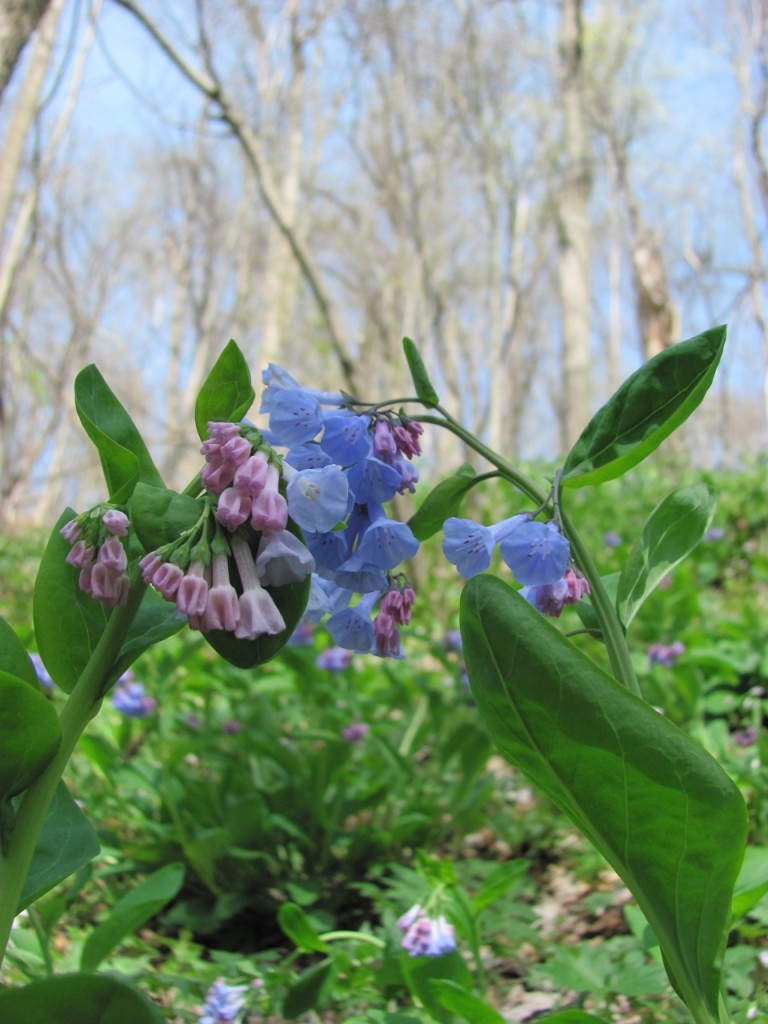
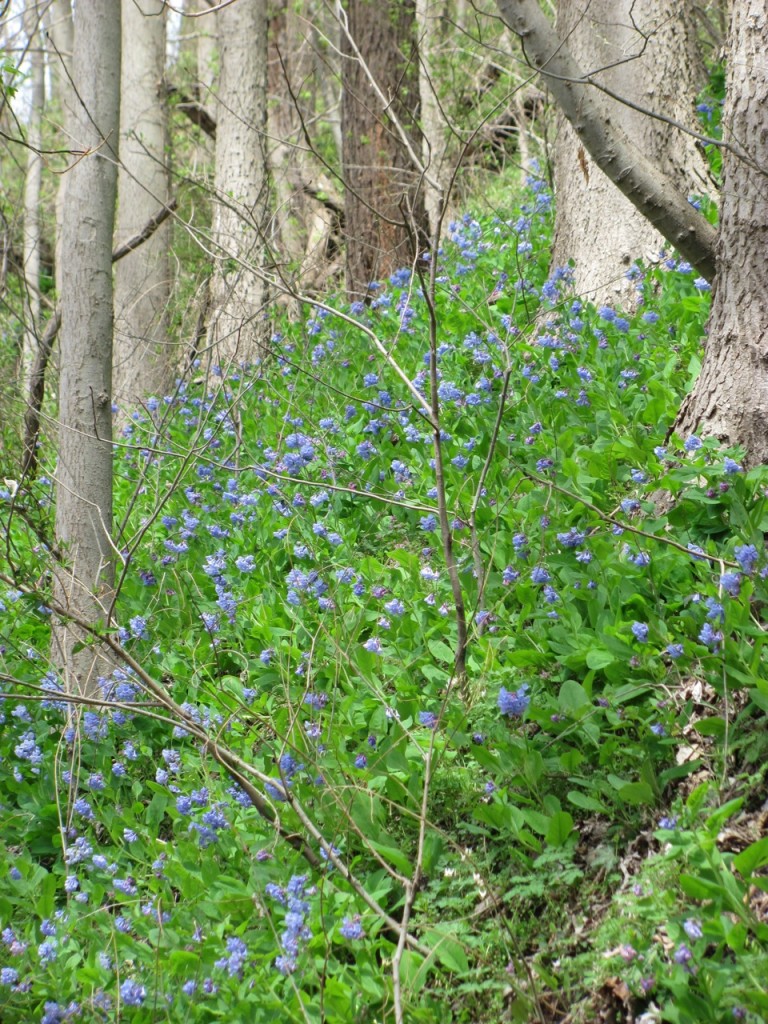
We have been acquainted with Shenks Ferry Wildflower Preserve for half a decade, and within this time we have come to understand qualities of our region that further deepen our sense of place; living here as we are under the same skies, we naturally gravitate to the earthly beings in our presence, and on this balmy April day, the green ones have our attention. Of course the blue waters of the grand Susquehanna River and the bluest of the crisp Spring Skies illuminating our world cannot be compared fairly to the transcendence of blue, iridescent pale blue of the Bluebells at Shenks Ferry.
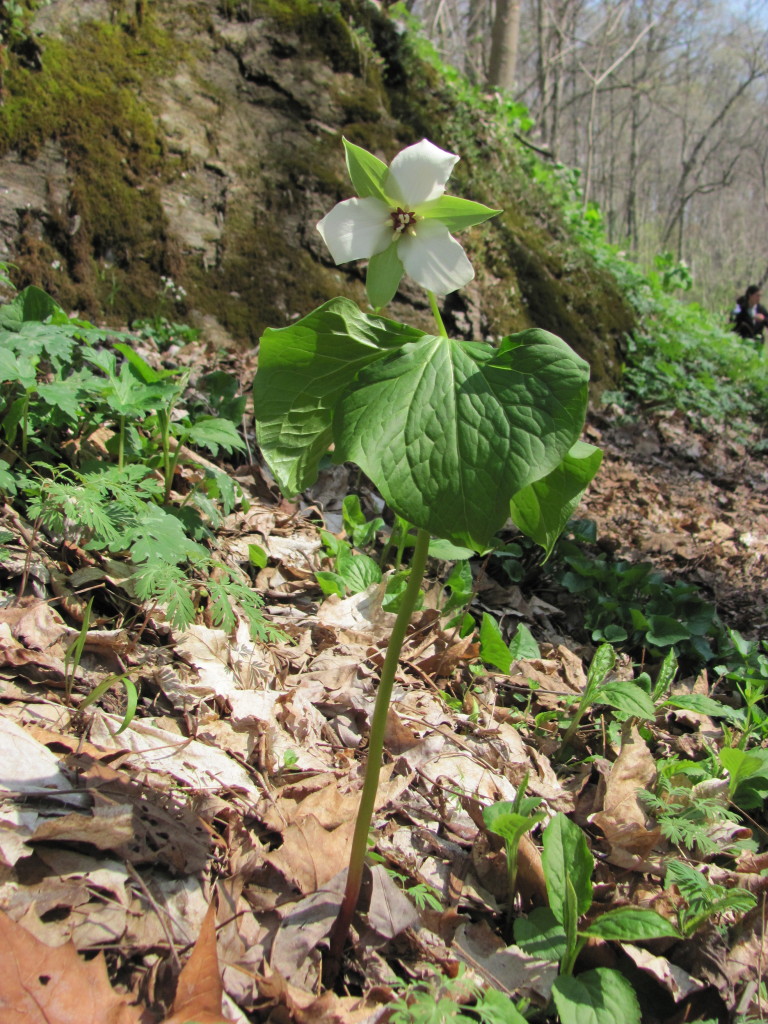
These gorgeous Springtime hillsides, filled with such a bountiful array of plants are the splendor of Spring in all of its glory on this balmy April day, they are a joy to behold and it is overwhelming, in the best way possible. We begin identifying the plants in their scientific classifications, Latin names finding their ways off our tongues, establishing themselves clearly once again as if they have come out of dormancy, re-emerged from the earth itself having turned a brilliant green, white and blue- Mertensia, Aquilegia, Sanguinaria- canadensis, virginiana!
But after a few hours here the classifications blur as much as the species of Trilliums in Shenks Ferry have hybridized and blurred into a white one now being called the Susquehanna Trillium –in any case we have lost our way, naturally into Spring we have become ensconsed; there is a beauty  here we cannot articulate easily as we enjoy it.
On this balmy Spring day at Shenks Ferry Wildflower Preserve.
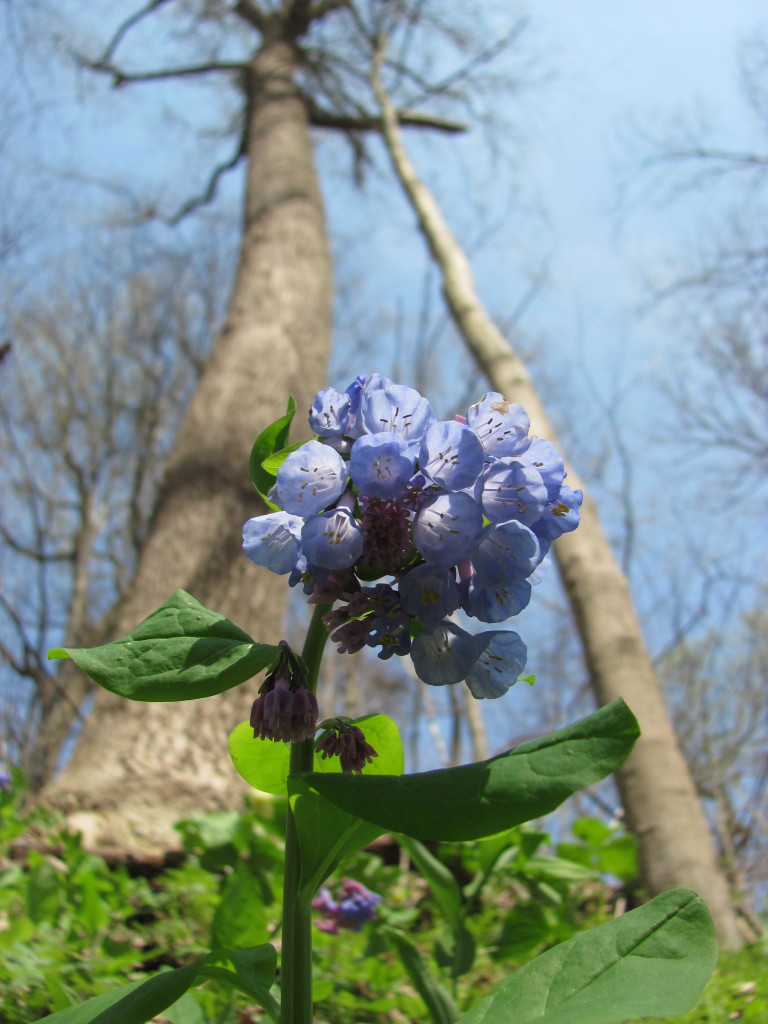
At once an emerging green hillside of Shenks Ferry is saturated with this effervescent blue color, bursting with the blue flowers, occurring in large patches across the hillside horizon and deep into the intersecting ravines abound with the whitest of Trillium blooms and the greenest of spring herbaceous foliage. The hillsides have come alive with the most resonant colors, saturated with life, and upon closer inspection, rich and loaded with the subtleties of the color palette; blues found in a broad range of pigmentation in the species of Bluebells Mertensia virginica and within the Violets and Woodland Phlox-blues that have emerged from the Earth.
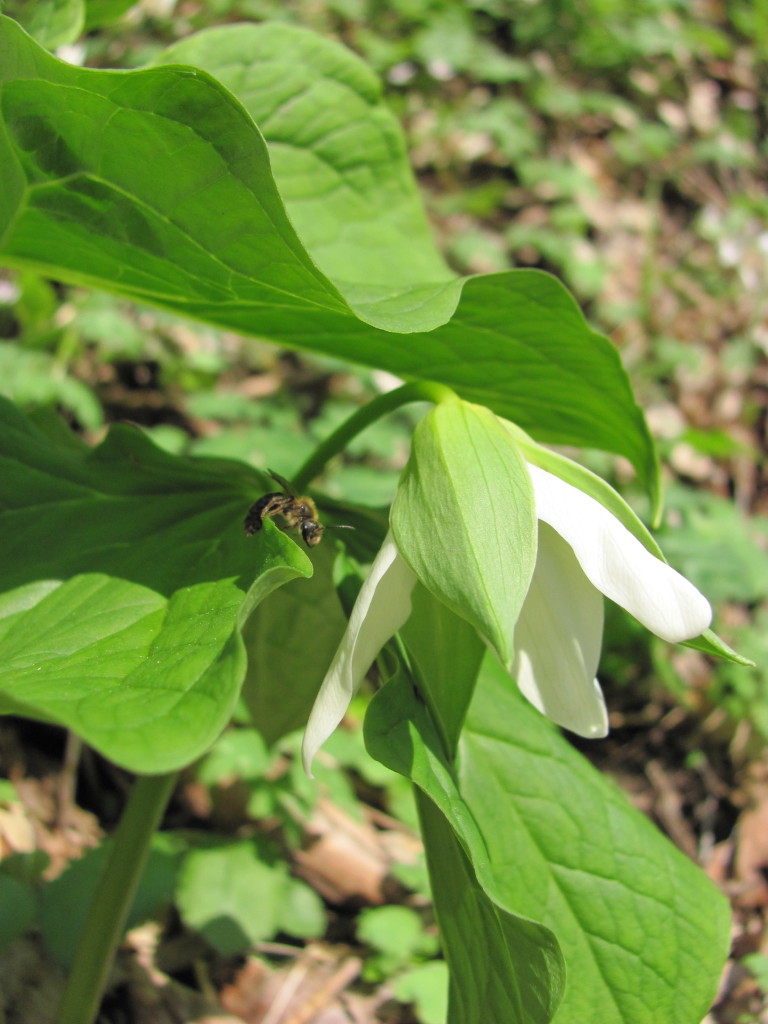
Below is the inflorescence of Squirrel Corn (Dicentra canadensis).
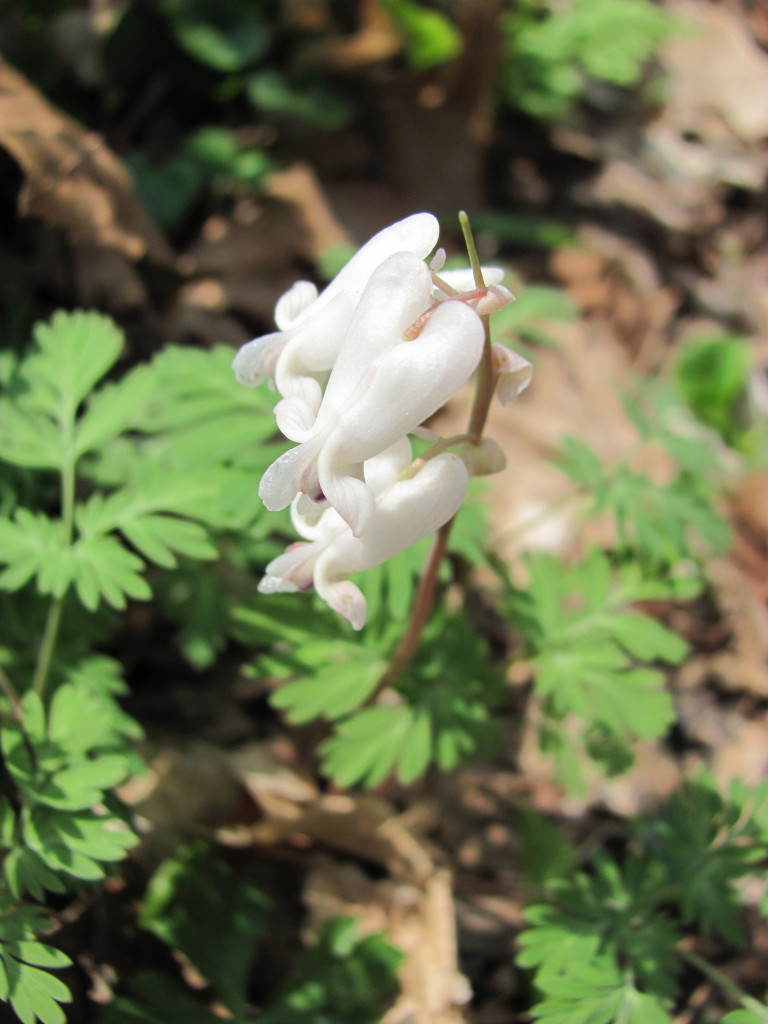
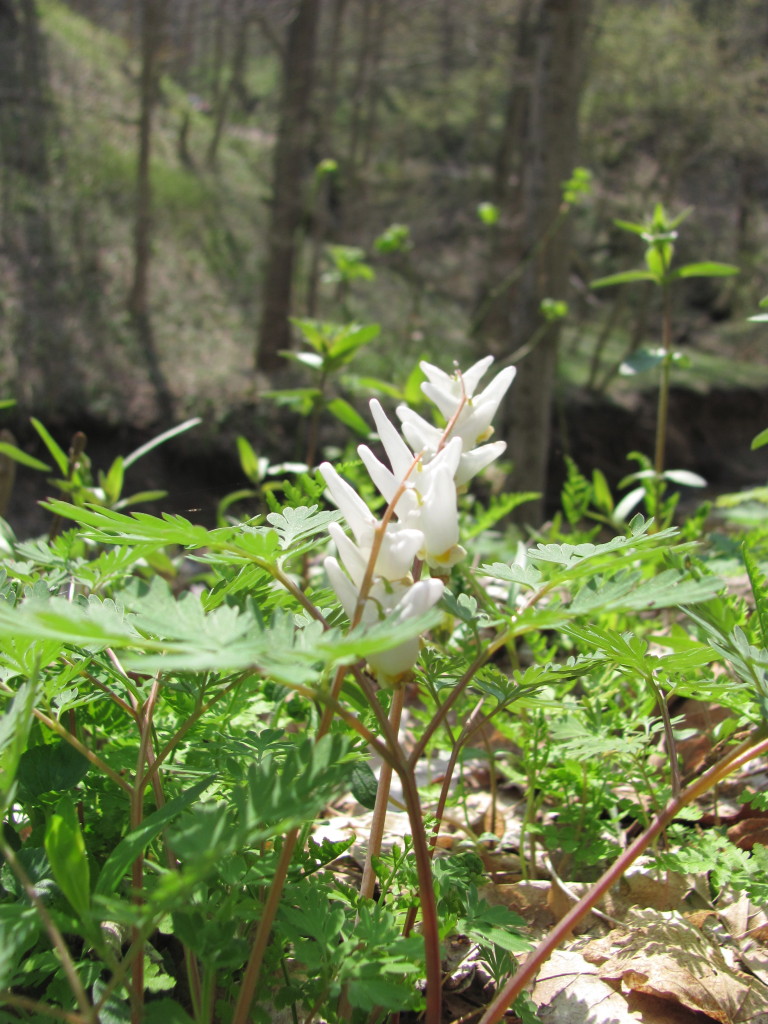
Above is the inflorescence of Dutchman’s Breeches (Dicentra cucullaria). Note the appearance of pantaloons hanging on a laundry line, the source of the common name.
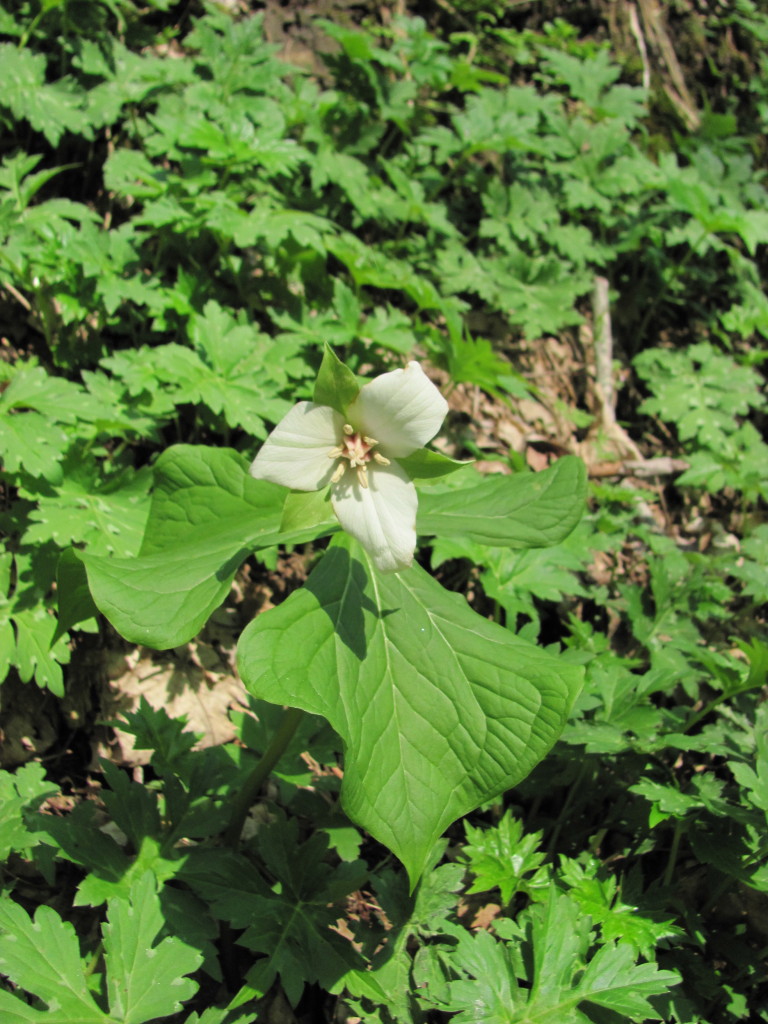
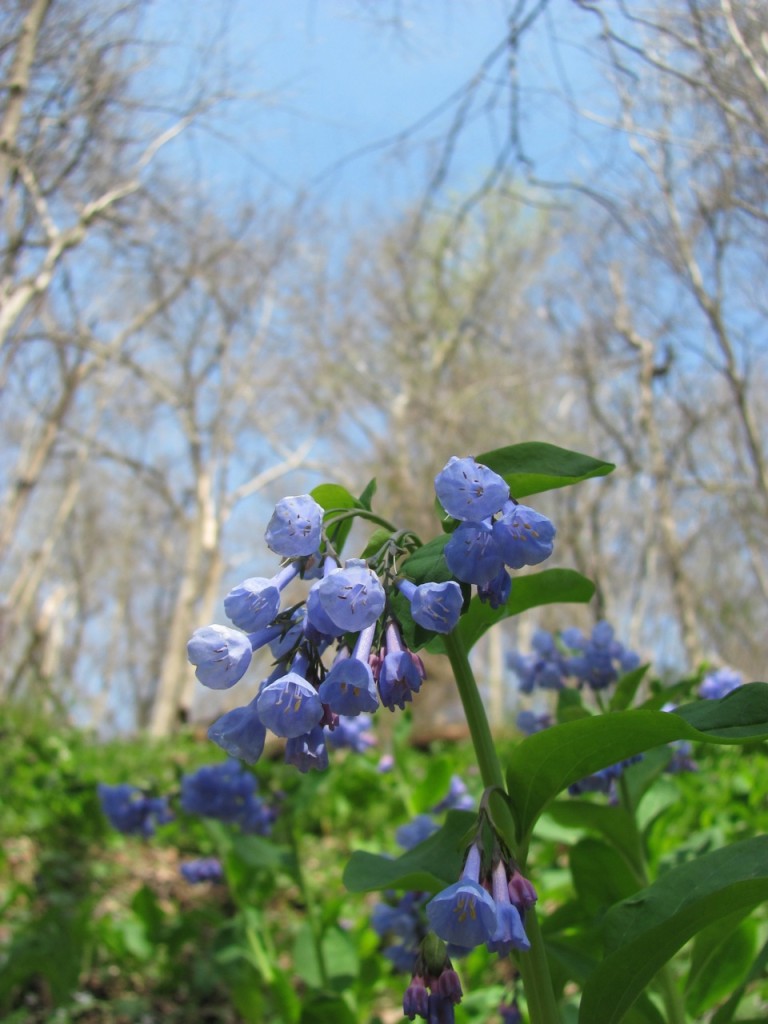
Bluebells and Trilliums, the iconic flowers of Shenks Ferry Wildflower Preserve.
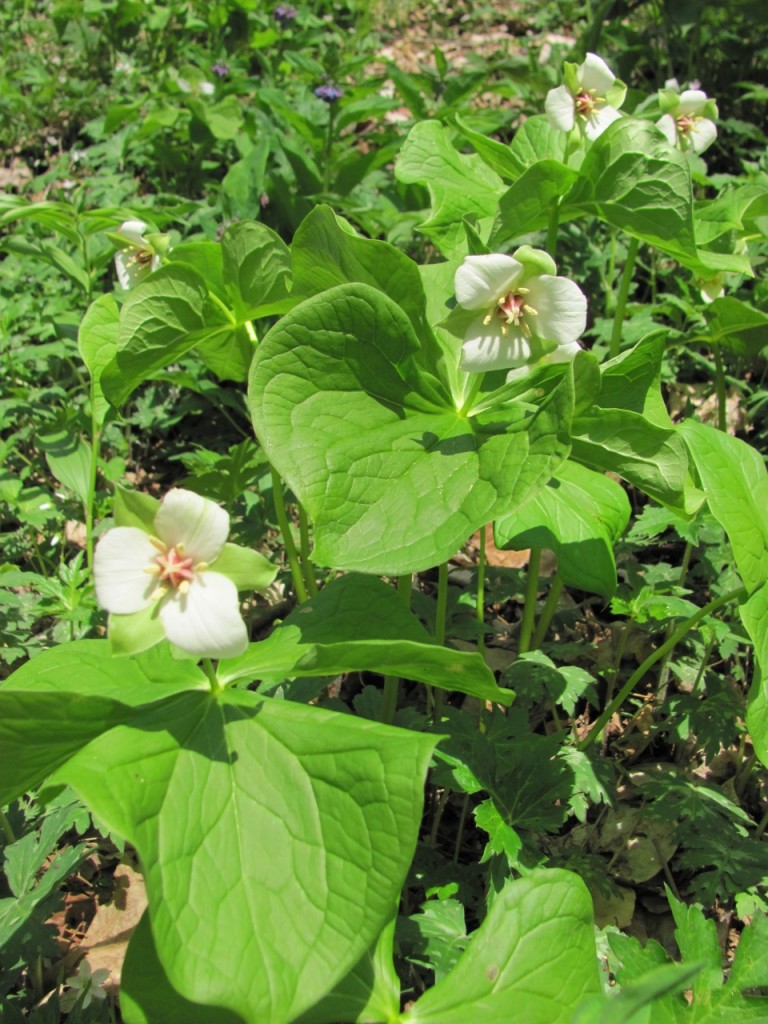
The wide trails at Shenks Ferry provide a great environment for wildflower appreciation and plenty of opportunity for socializing with other people also appreciating the beauty of this place.
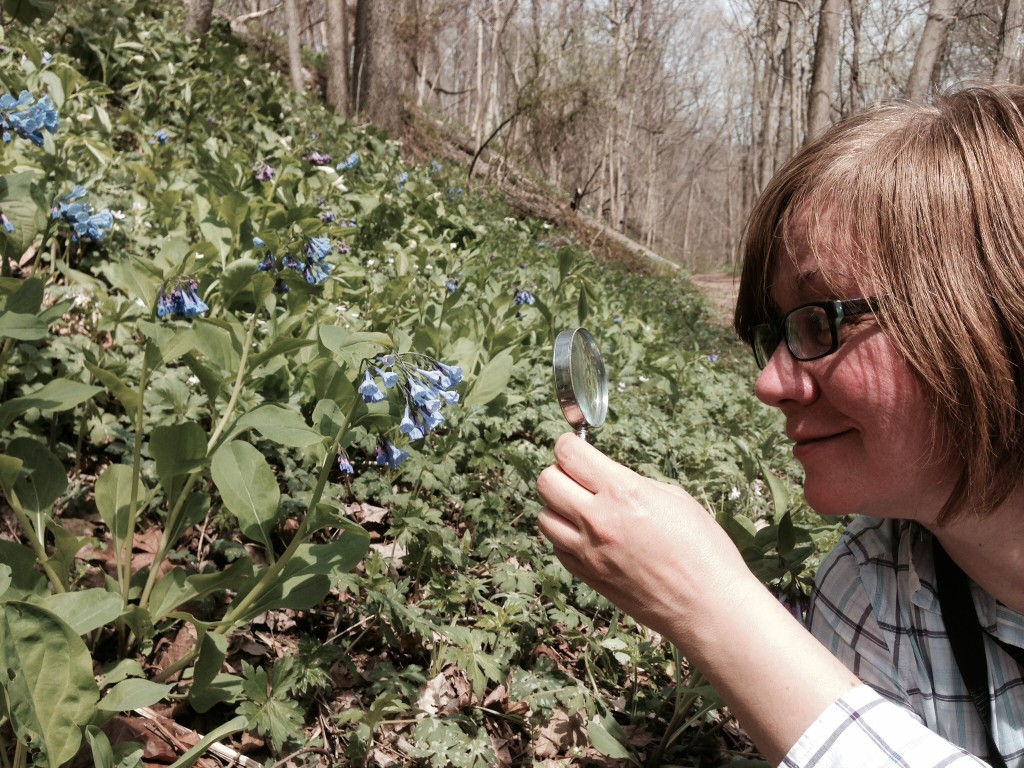
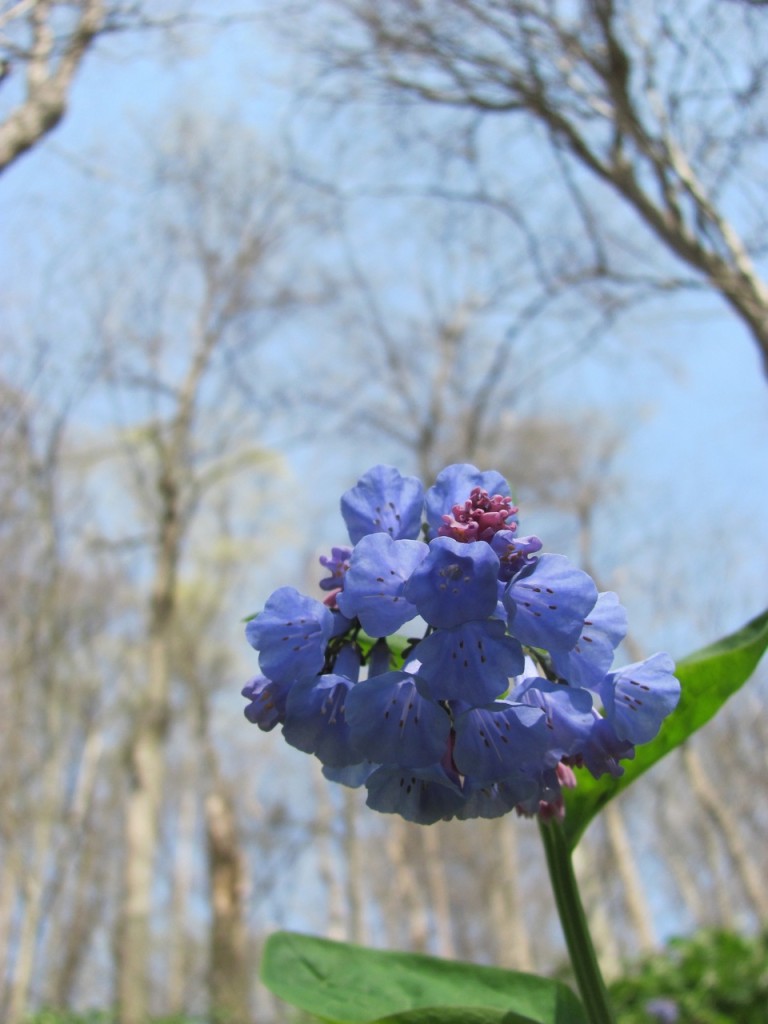
It is Spring when the excitement for the renewal of the landscape dominates insect, plant, human; plants- woody and herbaceous, become emotionally charged events in the human world; the insects, emerging from their states of hibernation buzz about the newly emerging flowering plants, hungry for the nectar.
Shenks Ferry is a place that is just growing as it is- it is not there to directly feed us or provide any products that benefit us materially. When we leave we take nothing nor have we altered this place in any way-stepped on, trampled or crushed any plants, picked or eaten any. This is a place that we visit with the utmost respect of, a special place that we make no mark of our own upon, but one that we will come home never forgetting, always wanting to revisit. Just being there we have to remind ourselves that we are actually there, it is that special.
We think about Shenks Ferry in the Springtime when we ponder the bigger picture-how we fit into the world as a species, our place amongst others, how we fit together and how much we like it- our true appreciation of our lives on this earth is contemplated-the best time to look at this aspect of life while stunned by the astounding beauty of this neighboring ravine of blooming plants.
Here is a place of beauty and astounding botanical interest that we have not been aware of previously that has become part of our life routine every Spring. How lucky we are to encounter this earthen province!
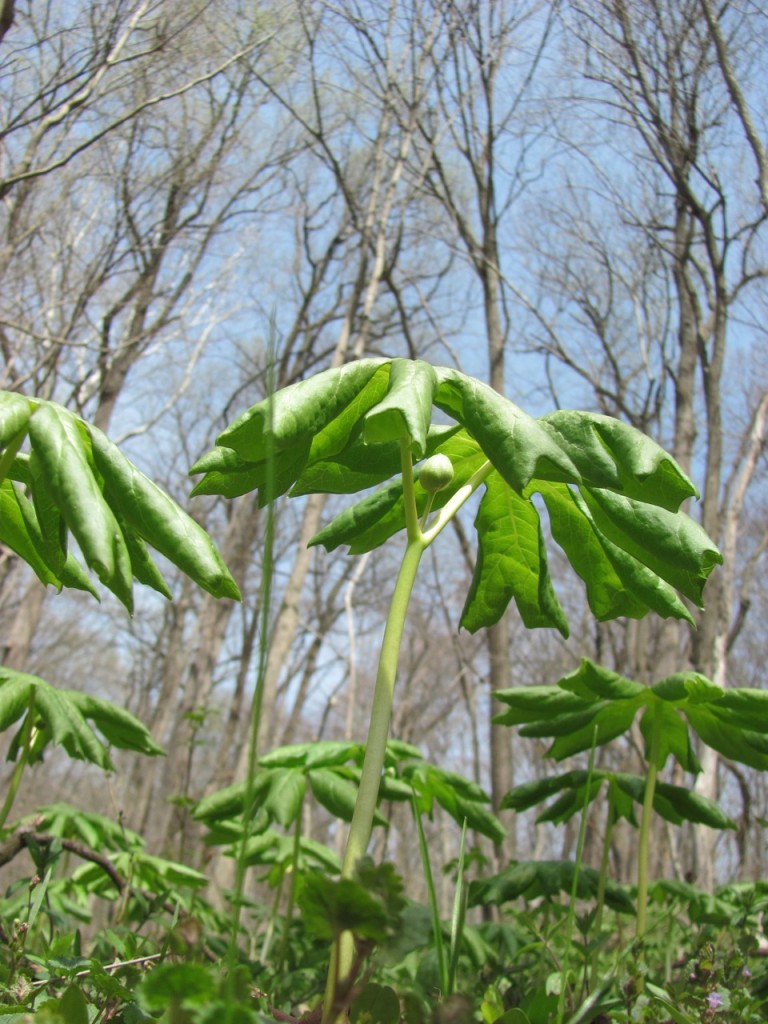
And with Shenks Ferry Wildflower Preserve we take with us a profound sense of natural beauty, regional beauty, a sense of place that is original and irreplaceable by anything, it is a true and visceral sensation of our place in the world; this is something coveted by all, that sense of place and belonging, this is something that concerns ourselves as we seek a continuation of the life we love.
Nature and its obvious romanticized aura is often relied upon in the sentiments that surround the death of loved ones as well as the contemplations of our own ends.
And precisely, why we bring up these beautiful spring flowers for you, here at Shenks Ferry, because they are about the lively life abounding before us, the continuous proliferation of species.
When our species interacts with the land, often enough the distinction and charm of the region is lost, most likely in concurrence with the loss of habitat of existing species. The resulting extirpations deprive the land of its character and connection to its provenance and the other species have no recourse. Such disturbances are common enough, making it increasingly difficult for the impressionable imagination to comprehend the land as it had previously evolved.
Geologically, such drastic changes are considered catastrophic and are often considered the end of a stage of time, a delineation that can be read in the fossils embedded in rocks, where species are suddenly cut off, often to become extinct. Geologists in some circles are even starting to discuss re-naming the era we live in today to reflect these drastic world-wide changes in the land that are supposedly reflecting the needs of our species.
It is difficult to understand how altering the land to sustain the needs of our species often results in the extirpation of so many other species. While making no claims to define and romanticize a pristine ‘natural’ world, it must be said that the lands in our midst are being used in an inappropriate and inefficient manner and there are long-term consequences to such habitat loss and extirpation.
Consider the pollination issue, one that is rising up steadily in our scientific understanding, and is directly threatening our food supply as a species. Everything we eat requires pollinating insects-such as our food also requires water and sunlight to grow. The pollinating insects buzz from plant to plant distributing the pollen of other plants to the plants we will be hopefully eating the fruits of. The fruits will not grow if they don’t receive the pollen from the other plants because every species requires genetic diversity within populations. No pollinating insects > less plants pollinated  > less fruit  >  less food and so on.
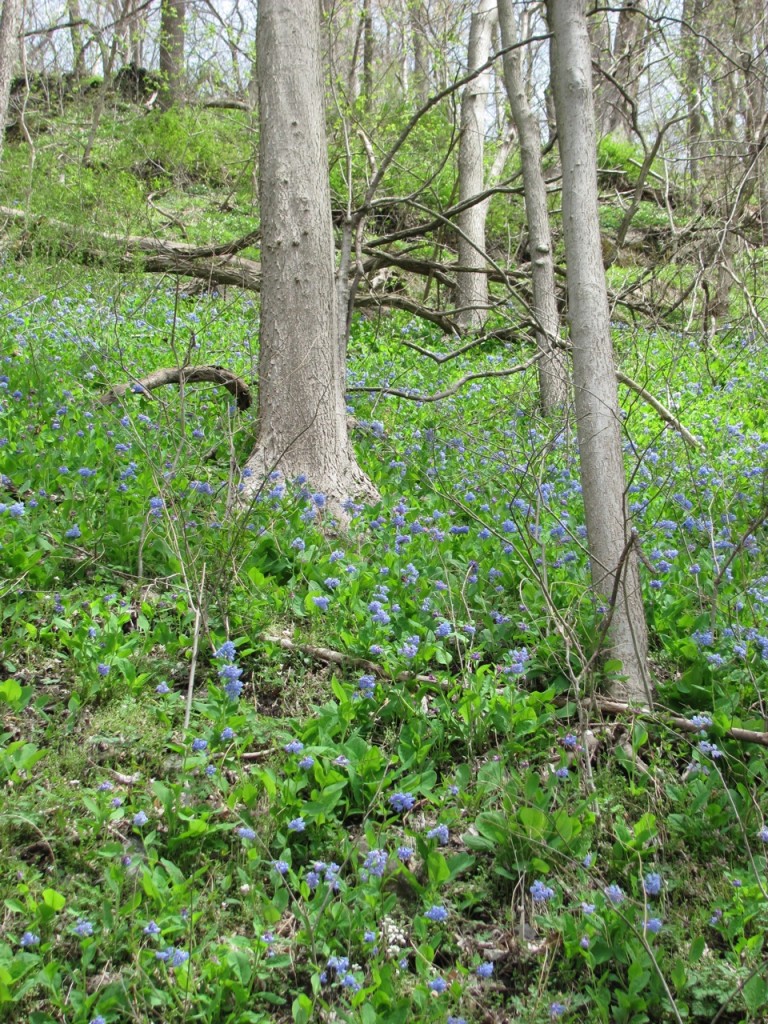
The introduction of the European honey-bee has been important to pollinating crops, and the sudden bee colony collapse syndrome has those in the agriculture industry, scientists and many others alarmed. With the steady decline of other types of bees, necessary habitats that sustain all pollinating insects, 9 billion humans who are concerned about eating in the long term should be very alarmed.
These plants we speak of blooming beautifully on this fine spring day in this small 50 acre forest remnant often play an important role in maintaining the habitat of the web of insects that literally keep us alive. These plants are hosting these insects, many of them are the sole hosts of their species-specific larvae. Â For example, the Spicebush Swallowtail Butterfly pollinating your garden vegetables depends on the Spicebush in the woods. This is the species that it needs to reproduce. This is the plant where it lays its eggs.
An so on with this we go delving into the ecosystems of species all around us that we as a species behave in ways that are interpreted to be oblivious to their outcomes, their health and ultimately to our own.
Generally in our stewardship roles in environmental restoration go, if we don’t know what it is we do not remove it.
We can only hope that in the forgotten niches, grottos and crevices of the lands humans use and alter, species of plants, insects, birds, mosses etc will survive and weather the onslaught of short-sighted and negligent practices of land use.
Natural areas such as Shenk Ferry Wildflower Preserve continue to be dissected and carved up as the immediate needs of society demand wiring races of high-tension lines and the plumbing of oil and gas; yes indeed as we arrived at the front gate it was immediately brought to our attention that there is a proposed gas pipe-line to run right through Shenks Ferry Wildflower Preserve, with a 150 foot wide open cut. We were unable to get the exact details of this horrifying proposition, but it could greatly diminish the preserve and may even threaten rare species, ruin a natural treasure of Lancaster County and generally destroy the quality of life of all of those around the locally extirpated species.
This shocking news left us looking at flowers that are now being threatened and may not exist if this monstrosity is plumbed through this tiny, fragile preserve. There are calls for public comment and addressing legislators. Please visit The Lancaster Conservancy’s site to get more information.
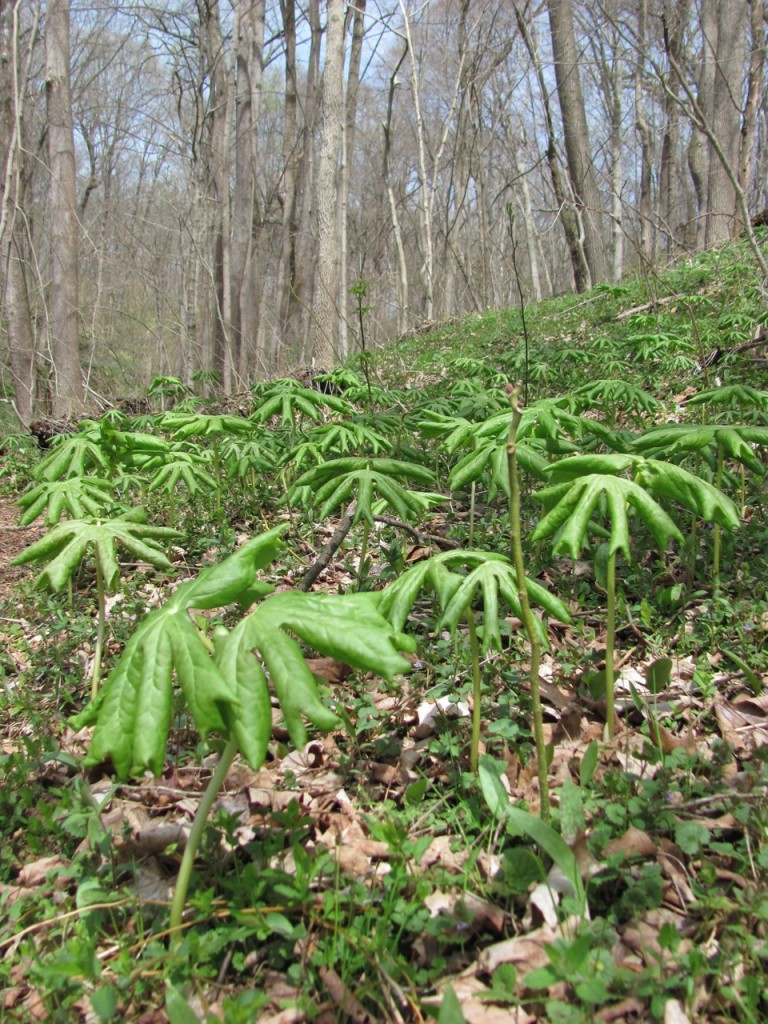
As ephemeral as some of the springtime wildflowers are, the land we reside in can be blooming one day and gone the next. While recovery is possible, as some species survive and exist in the hidden cracks of the human landscape, much is lost in the persistent dis-mantling of ecosystems and habitats.
The elusive, long-term costs to such environmental devastation can be speculated, assessed, hypothesized, dramatized, overlooked, ignored and addressed, but they are most certainly not known.
As quickly as the spring wildflowers drop to the ground into dormancy, to return the following year, as they have for millennia, often in the same spot or ones nearby, new seasons are ahead and they fade from memory until they re-emerge from the earth. These are the cycles of life we have adapted to in our cultures, the death/ renewal rituals often accompanied by the plants and flowers, animals- the world around us that gives us meaning to life, and a sense of place. The sense of meaning to life that makes it worthwhile, to continue on, to exist in this form and condition in this place is something that is held on to and interpreted and reinterpreted, but remains established.
Is there something missing in the realm of meaningful thought , ritual, collective philosophical agreement, historical congruity (that which has translated across historical periods and civilizations resulting in collective assumptions and behaviors), the understanding of our world and ritual that is resulting in this outright disregard for other species, habitats, places?
Please chime in with your thoughts on this question.
If the level of desperation for resources is that acute that long term planning of our own specie’s survival is lacking and premature, then perhaps the sense of meaning and purpose that drives our cultures and society is failing us and that needs to be addressed before our species can begin to at least respect the rest of the world around us. Perhaps a starting place to re-evaluate on a species level our place in the universe would be to carefully and sensitively look at what we are destroying first, and go from there.
If we as a species are unable to evolve and adapt to living amidst the other ones and their (our) habitats and ecosystems, include this adaptation into our daily cosmology, ritualize our evolutionary processes in practice and philosophy, we will ultimately fail, delegitimizing all of this species’ constructions- spiritual, cultural, metaphysical and otherwise in the geological record.
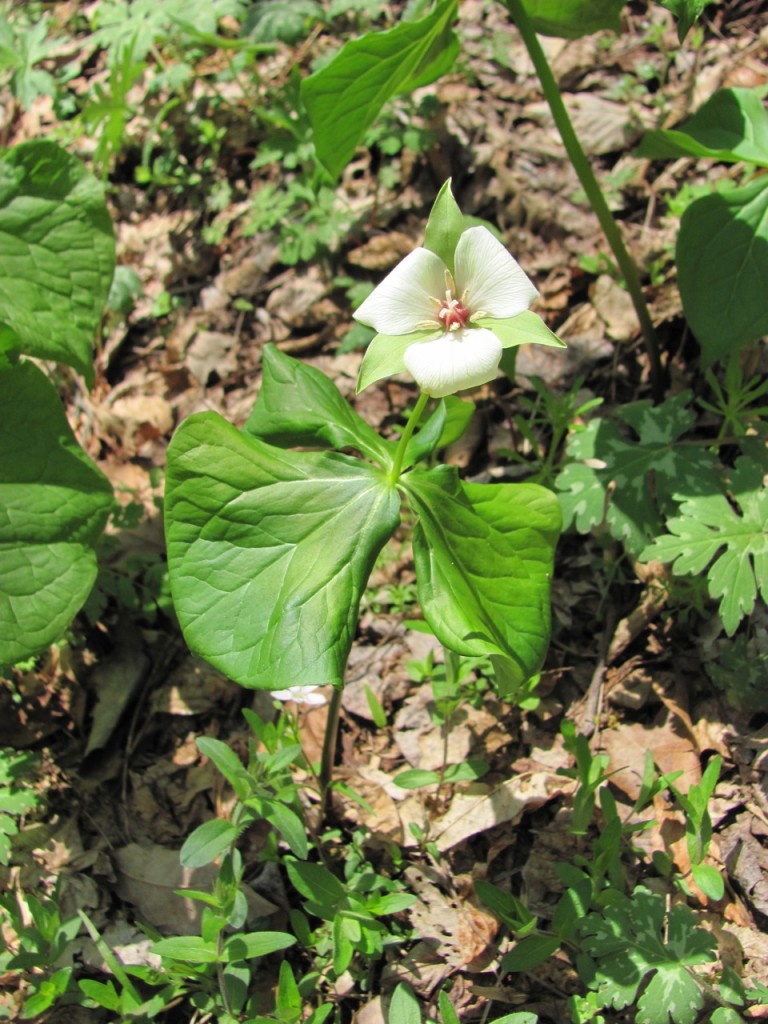
One last thought as our precious wildflower preserve is threatened with further destruction: We as a species will lose out the most, being deprived of the landscapes that give us a sense of being, perspective-giving vistas, seasonally changing and appropriate back-rounds to our lives, the places we take our families to see are being taken away from us, one gas pipeline at a time. Â Whole populations of trees, shrubs, and herbaceous plants, animal habitats, insects will be extirpated in this proposed pipeline. In other words, they will be ripped out and will die. Our wildflower preserve will die in so many ways congruently.
At best and hopefully, the species of concern will survive this latest assault and will eventually recover and may indeed repopulate this place and we may or may not  be here to appreciate this in the unknown future of Shenks Ferry. Regardless of this outcome, which may result in destruction and lifetime extirpations and the long term destruction of habitat and ruination, further degrading our quality of life, there may be a glimmer of light long in the future- the species of Shenks Ferry will possibly survive this one, as they have for millennia and one day thrive as beautifully as they do on this fine, balmy, April  19th Day, 2014. Or least perhaps one day a world will exist here that matches the beauty we as humans today perceive, value and recognize.
Shenks Ferry Forever!
This is Spring!

The delicate white flowers of Bloodroot have arrived. This has been a long, cold winter, different than the ones in the past few years.
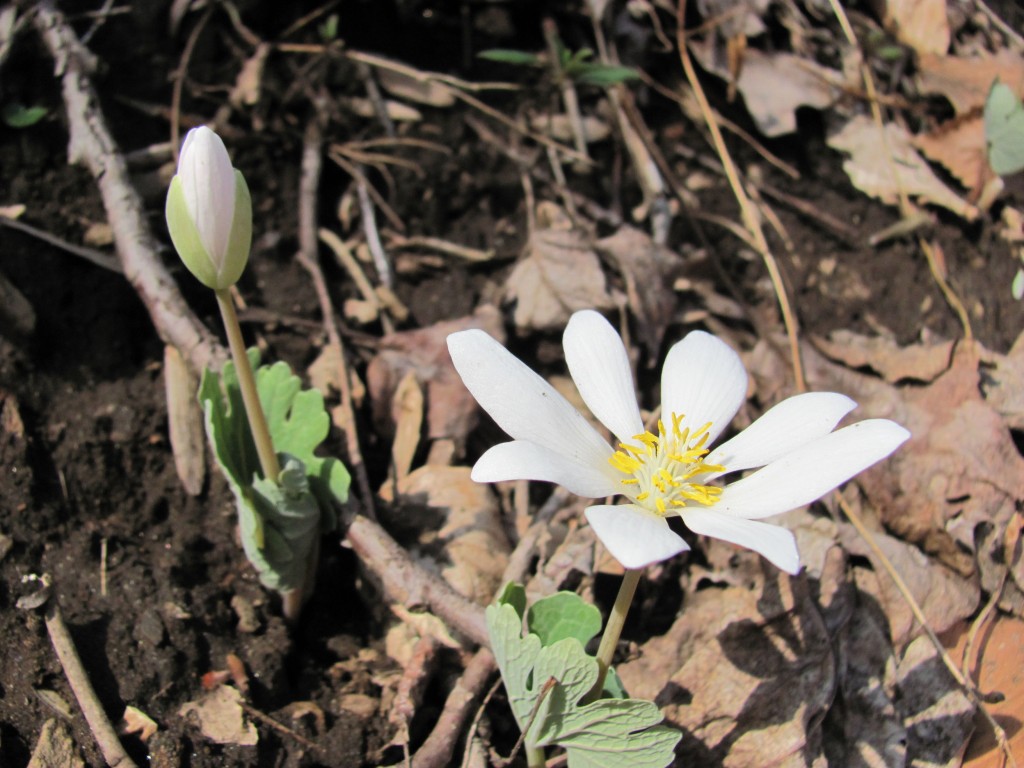
We weren’t sure if they would be blooming but we took the chance and went here to see. It was a warming afternoon, with some sun and clouds.
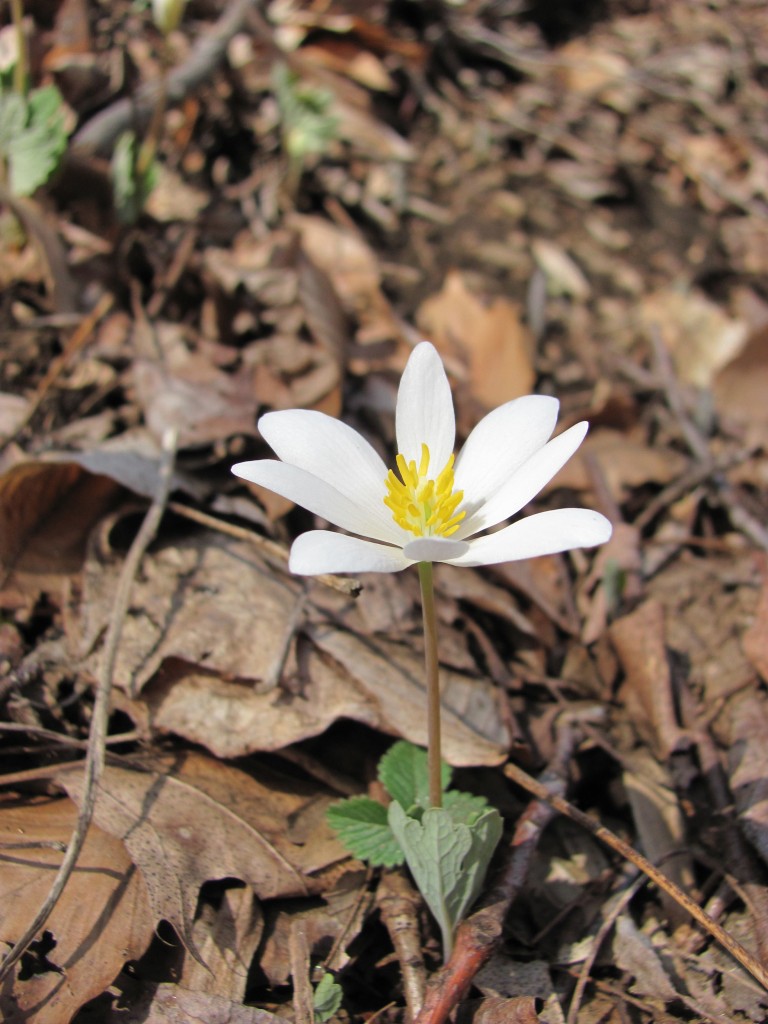
We were actually a bit surprised they were up and blooming.

But here they were, the Sanguinaria canadensis, Bloodroot, the namesake for this blog and our inspirational plant blooming away in the middle afternoon sun of this early April weekend day.
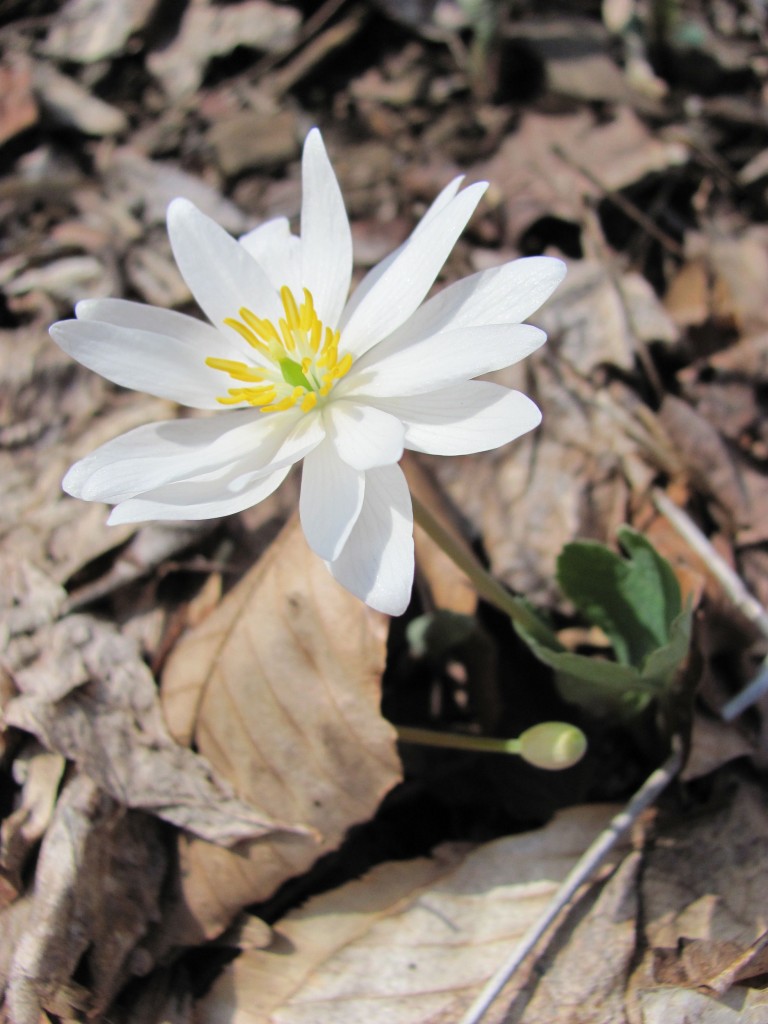
This is a well-drained and sunny Springtime hillside, a perfect place for Bloodroot to thrive.
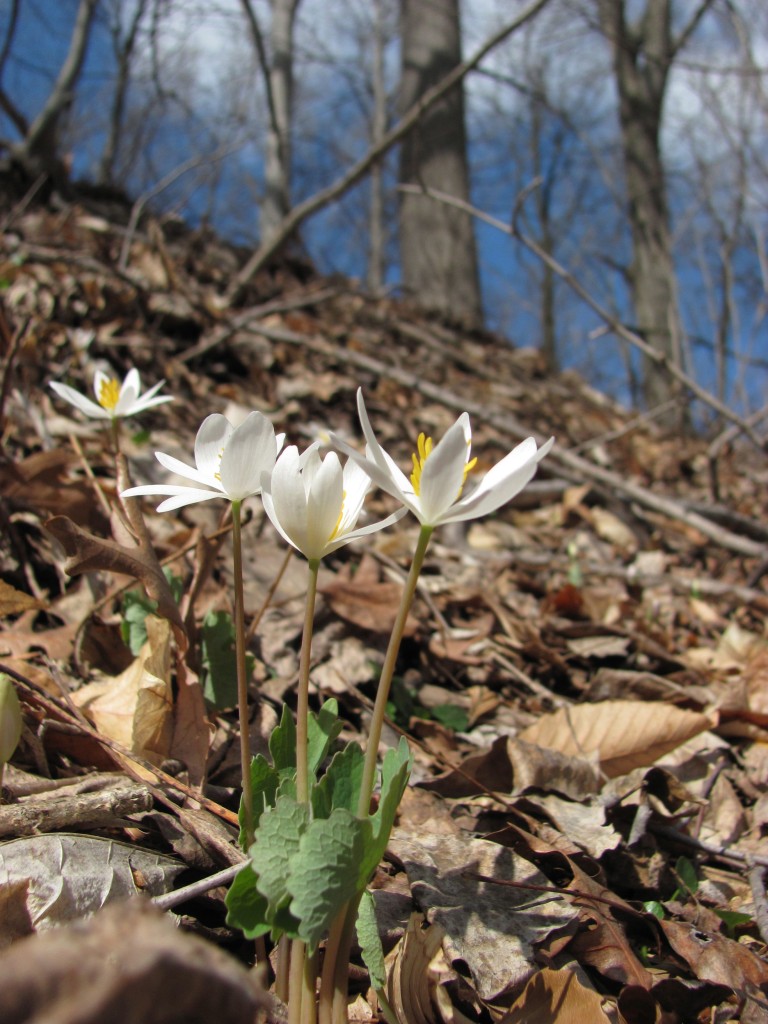
After such a long winter, these beautiful white flowers are the perfect greeting of Springtime.
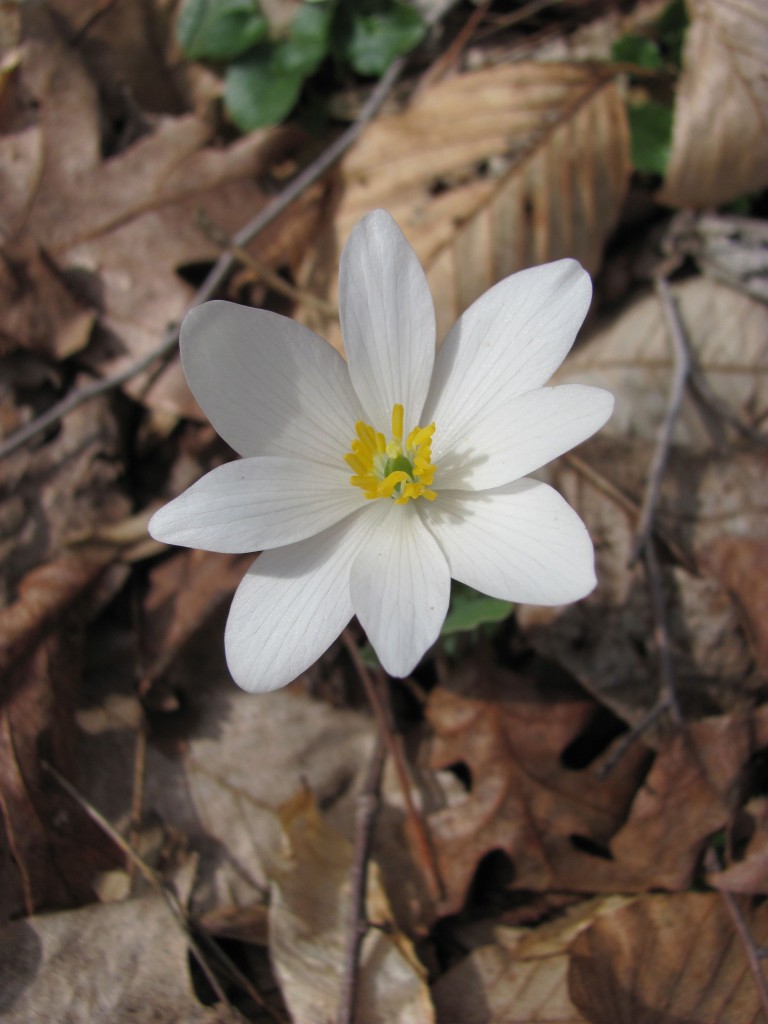
Springtime is here!
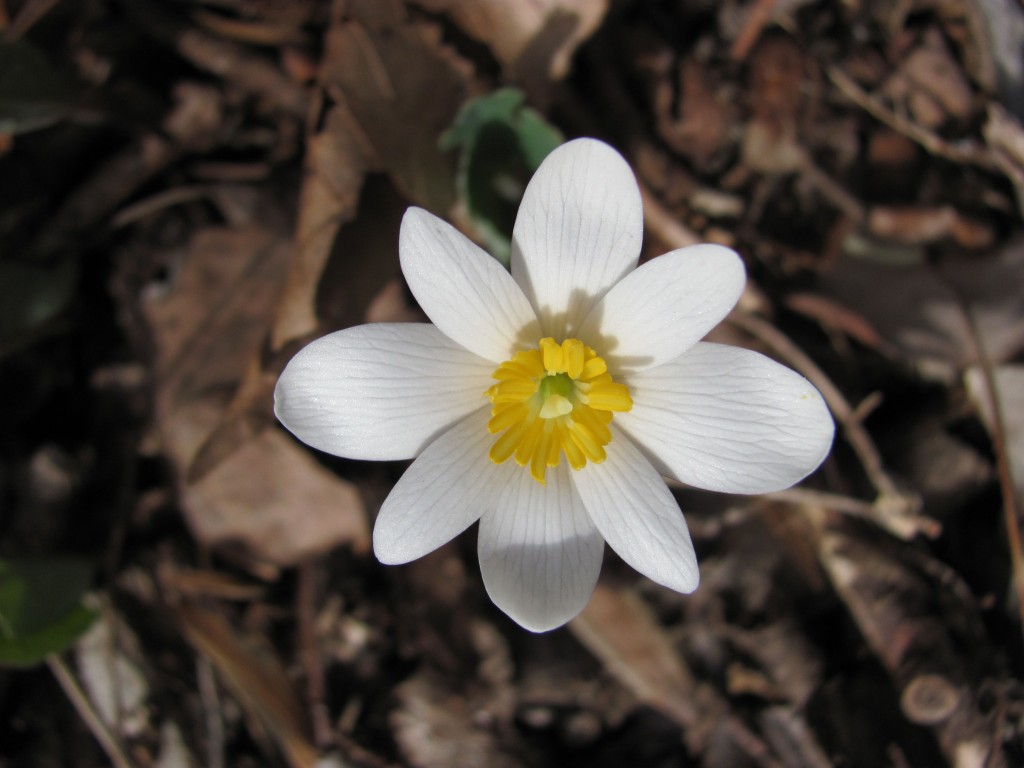
To know more about this flower and its habits please read our article that describes in greater detail its magnificence.
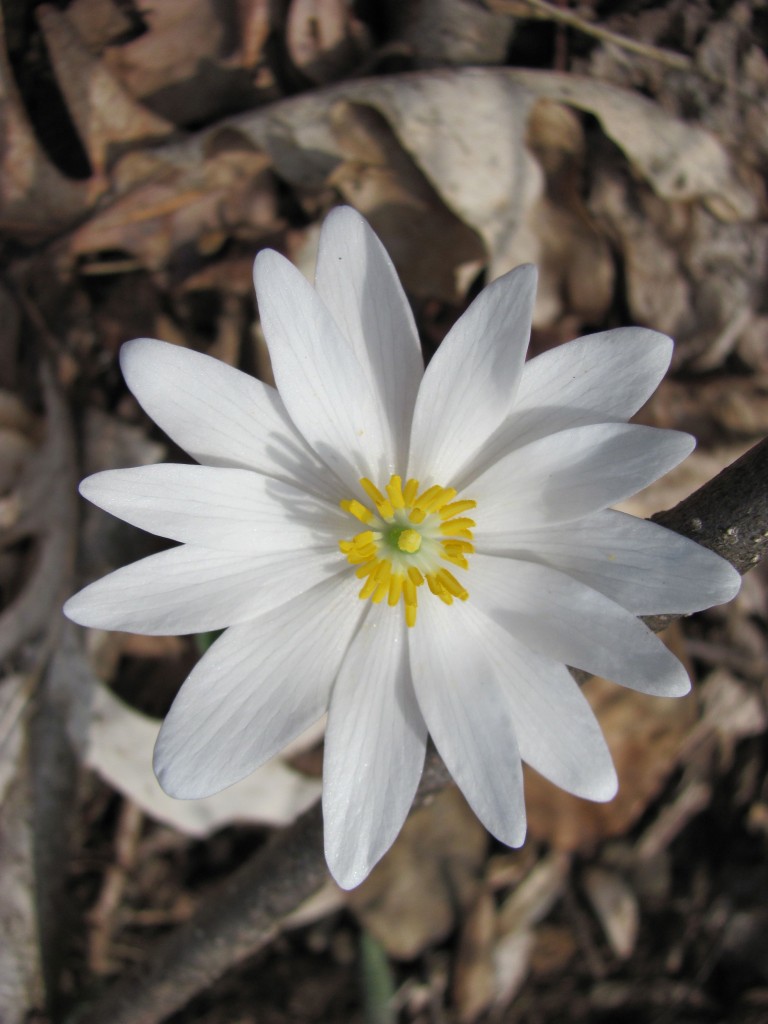
Below is the hillside with all of the blooming Bloodroot. At the first glance, it would appear as if there is no blooming flowers here.
Bloodroot blooming in Pennypack Park, Philadelphia, Pennsylvania, April, 5th, 2014. www.thesanguineroot.com